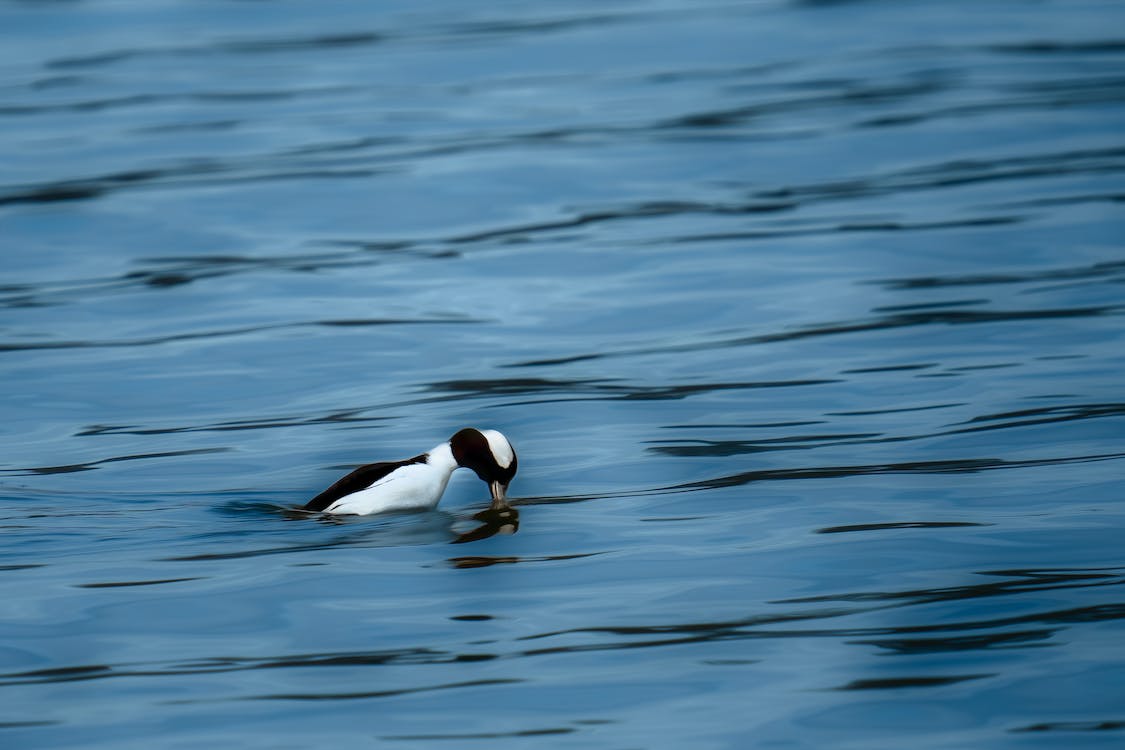10 Fun Facts About Buffleheads |

|
|
Photo by: Skyler Ewing |
|
Buffleheads are small, unique diving ducks that are native to North America. They are known for their striking black and white plumage and large, bulbous head. In this article, we'll explore ten fun and interesting facts about these fascinating birds. We talked about them on our podcast! Take a listen. The Name "Bufflehead" Comes from FrenchThe name "buffle" is French for "bulging." Buffleheads are so named because of their large, bulbous head, which is much larger in proportion to their body than that of other ducks. Buffleheads Are the Smallest Diving Ducks in North AmericaBuffleheads are the smallest diving ducks found in North America. They typically measure around 13 inches in length and weigh between 10 and 19 ounces. Buffleheads Have Striking PlumageBuffleheads have striking black and white plumage, with a green iridescent sheen on the male's head. The female is less colorful, with a gray-brown head and back. Buffleheads Are Migratory BirdsBuffleheads are migratory birds, spending the winter in coastal areas of the United States and Mexico and breeding in freshwater ponds and wetlands in northern North America. Buffleheads Are Powerful Swimmers and DiversDespite their small size, Buffleheads are powerful swimmers and divers. They are capable of diving to depths of up to 30 feet to forage for food. Buffleheads Have a Varied DietBuffleheads primarily feed on aquatic insects, crustaceans, and small fish. They have a serrated beak that helps them grip and hold onto their prey. Buffleheads Form Long-Term Pair BondsBuffleheads are monogamous and form long-term pair bonds. Males attract females with courtship displays that involve head-bobbing, wing-flapping, and calling. Buffleheads Nest in Tree CavitiesBuffleheads have an interesting nesting strategy. They use old woodpecker holes or other natural cavities in trees near water to build their nests. They also use man-made nest boxes placed in suitable habitat. Buffleheads Have a Distinctive VocalizationBuffleheads have a distinctive vocalization, which has been described as a soft, mellow whistle. Males and females have slightly different calls. Buffleheads Are Not EndangeredThe Bufflehead is considered a species of least concern by the International Union for Conservation of Nature (IUCN). However, it is still important to protect their breeding and wintering habitats from development and pollution. Closing Thoughts on the BuffleheadsIn conclusion, Buffleheads are a unique and fascinating species of bird that are worth learning about. From their small size to their striking plumage and powerful swimming and diving abilities, these birds are truly remarkable. By taking steps to protect their habitats and learning more about their behavior and biology, we can help ensure that Buffleheads continue to thrive for generations to come. Fun Facts About Buffleheads FAQsWhere Can I See Buffleheads?Buffleheads can be found in coastal and freshwater habitats throughout much of North America. Look for them near lakes, ponds, and rivers. What Do Buffleheads Eat?Buffleheads primarily feed on aquatic insects, crustaceans, and small fish. How Long Do Buffleheads Live?Buffleheads can live up to 10 years in the wild. How Do Buffleheads Fly?Buffleheads are powerful fliers and can reach speeds of up to 60 miles per hour. They have short, broad wings that help them maneuver quickly in flight |